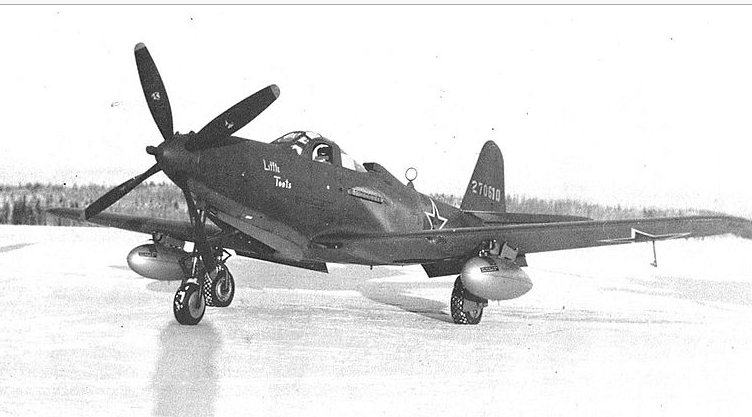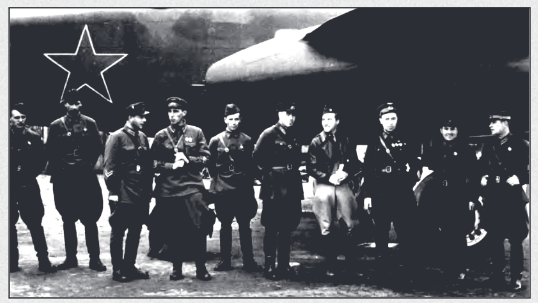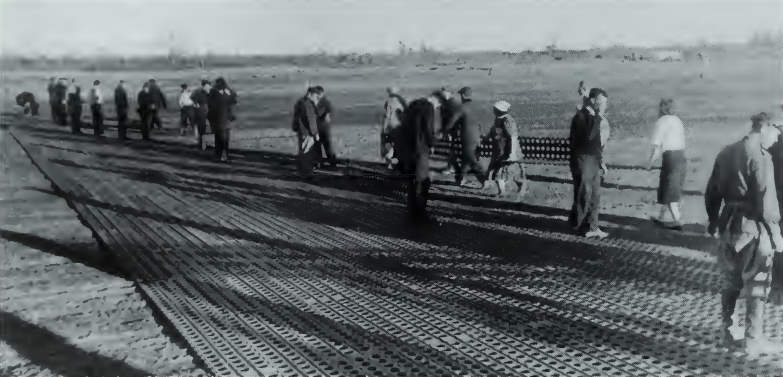Mother’s dad, Alexander Gorbunov, a young engineer specializing in the radio communications, was drafted to serve in Siberia during WWII. His crew was working on installing and maintaining radio ranging stations for airstrips and airports on ALSIB (ALaska-SIBerian) air road.

“Whereas the Governments of the United States of America and the Union of Soviet Socialist Republics declare that they are engaged in a cooperative undertaking, together with every other nation or people of like mind, to the end of laying the bases of a just and enduring world peace, securing order under law to themselves and all nations…”
— Washington, D.C., June 11, 1942
ALSIB (or the Northern Trace) was the Soviet Union portion of the Alaska-Siberian air road receiving Lend-Lease aircraft from the Northwest Staging Route. Aircraft manufactured in the United States were flown over this route for World War II combat service on the Eastern Front.

In 1941, the United States began supplying Great Britain matériel to help them in their war efforts against Germany. Since U.S. law prevented the Government from extending credit to Great Britain and only permitted cash sales of war materials, the supplies were on “loan” (1941 Lend Lease Act).

The Lend-Lease act allowed the U.S. to supply items needed for national defence to Great Britain and almost forty other countries including the U.S.S.R. whose defence was crucial to the United States.
The program cost nearly $51 billion from 1941 to 1946 with most aid going to the British Empire ($31 billion) and the Soviet Union ($11 billion).
The United States – Russia Lend-Lease program was a great contribution to the victory in World War II. Between 1941-45 United States transferred to Soviet Union a staggering amount of goods that included:
15,000 airplanes — 7,000 tanks — 5,000 Jeeps — 376,000 trucks — 132,000 machine guns — 42 million tons of food — 107 million tons of cotton — 15 million pairs of army boots.

During World War II, Fairbanks was a key node for the transfer of nearly 8,000 warplanes from the United States to the Russian battlefields via the Alaska-Siberia – (ALSIB) Air Route. In the three years of the route’s existence, thousands of Americans worked with Soviet personnel on the cooperative program.
From 1942-45, the Alaska-Siberia Lend-Lease operations demonstrated that two nations could set aside differing views, cultural values, and ideologies to achieve a common, mutually beneficial goal – to defeat Nazi Germany and its Axis partners. The heroism and dedication of the Soviet and American participants of the Alaska-Siberia Airway will not be forgotten.
It is my civic duty to express my deep respect to the ALSIB participants. Future generations should be brought up with a respectful spirit of patriotism to understand this history of cooperation between Russia and the US. I am proud that my family did contribute to this important project.
…
Bell P-63 Kingcobra in the Soviet Union

The P-63 Kingcobra was a further development of the Aircobra. It had the same general arrangement as its predecessor. The Bell Aircraft designers somewhat increased its dimensions, and changed the tail unit and wing. Out of 3,303 Kingcobra fighters constructed from 1943 to 1945, 2,400 went to the Soviet Union.
In December 1943, the Bell Company sent detailed information about the new fighter to Moscow. In February 1944, representatives of Nil WS, engineer-pilots A. G. Kochetkov and F. P. Suprun, were sent to the U. S. to carry out all-round tests of the plane before its mass delivery to the Soviet Union.
Having crashed one Kingcobra during the spin-tests, Kochetkov managed to convince the Americans of the necessity to modify the airframe. The shipment of P-63s was planned to begin in the first half of 1944. Early that summer American ferry-pilots delivered the first Kingcobras to Fairbanks and began to train Soviet pilots on them. In Alaska only the squadron commanders of the ferrying aviation division were trained. All other pilots would master the new plane directly in their regiments at the front. The P-63 ferrying went along the Alaska-Siberian ALSIB air route. The first plane was handed over in June 1944. Beginning in September 1944, while still in the American aircraft factory, the P-63A began to be painted with the symbol of the Soviet Air Forces-red stars with white edging.
The new fighter did not arrive at the front immediately since there was no Soviet aviation shortage at that time. This permitted careful flight testing of the P-63. From the end of 1944 until March 1945, the planes of the series A-1, A-5, A-7 and A-10 were consecutively tested in Nil WS and LII NKAP (“Letno Ispytael’nyi Institut Narodnogo Kommissariata Aviatsionnoi Promyshlennosti/ Flying-Test Institute of People’s Commissariat of Aviation Industry). On the whole, the P-63 performed well. Among its positive attributes were: high speed, good maneuverability, powerful weapons, and safe controls.








